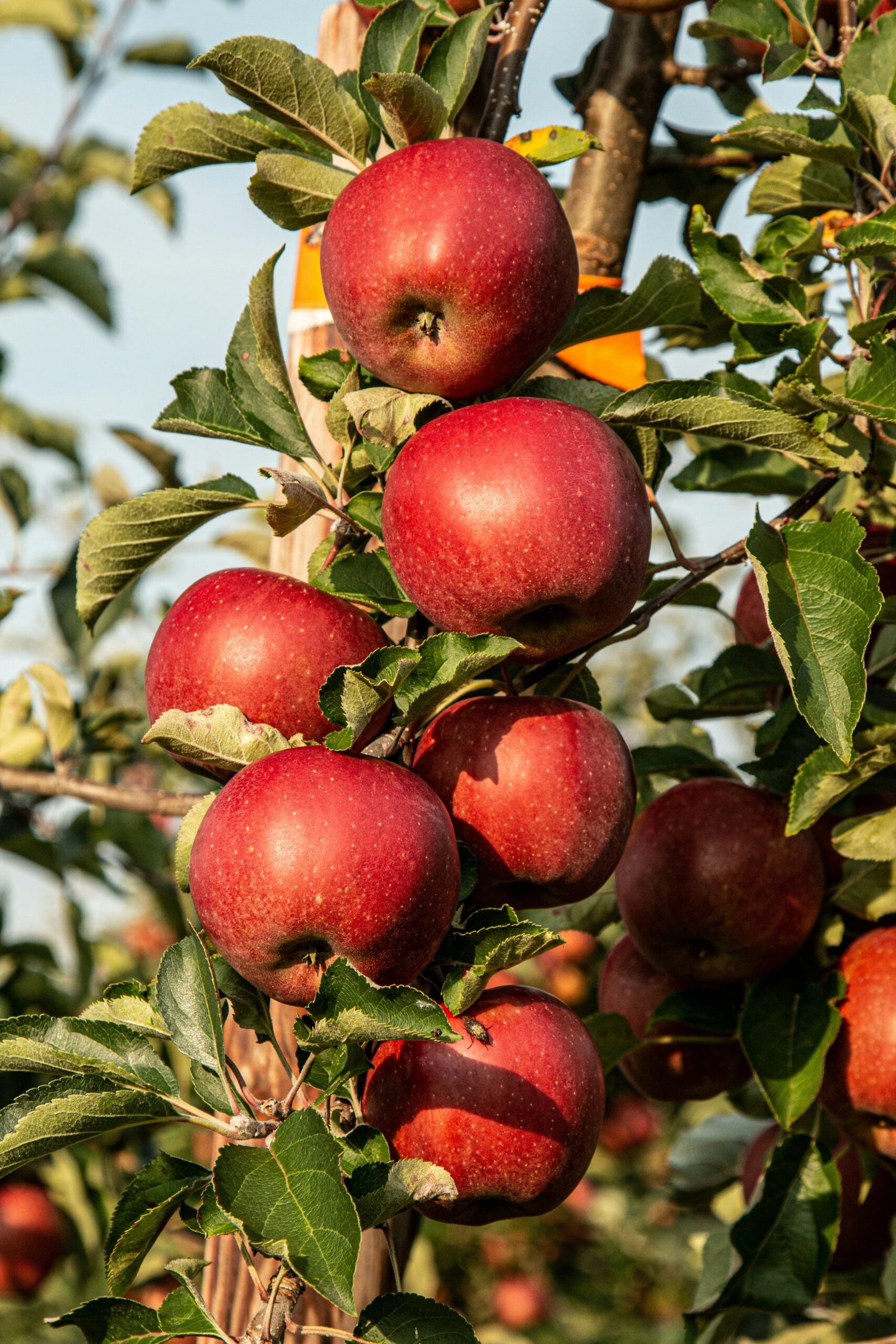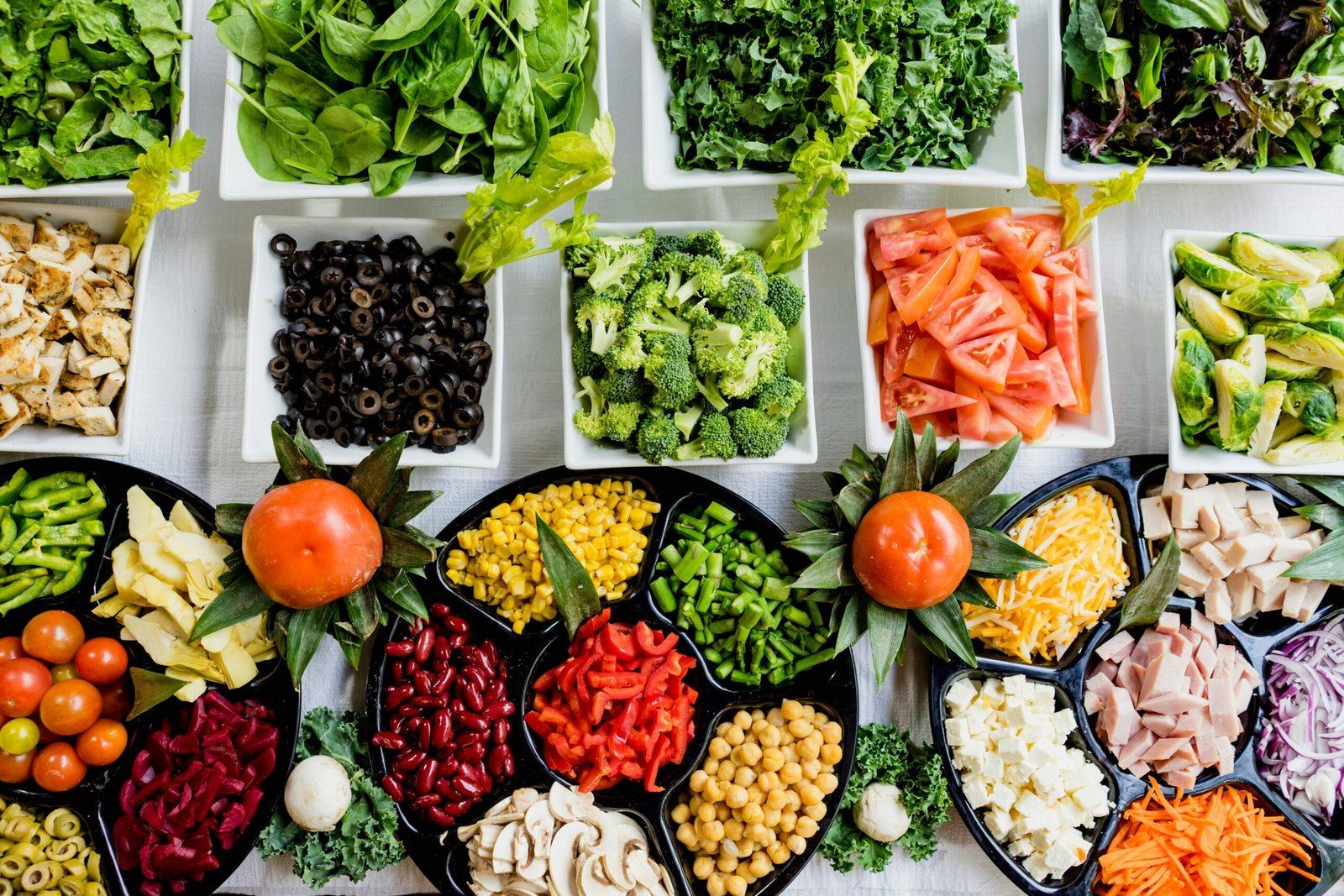1. Plan Your Meals in Advance
One of the most important tips for creating healthy meals is to plan your meals in advance. This allows you to have a clear idea of what you will be cooking and ensures that you have all the necessary ingredients on hand.
Start by creating a weekly meal plan. Sit down and decide what meals you want to make for the week ahead. Take into consideration your family’s preferences, dietary restrictions, and any special occasions or events that may require specific meals.
Once you have your meal plan, make a list of all the ingredients you will need. Check your pantry and fridge to see what you already have and only buy the items you need. This will help you save time and money by avoiding unnecessary purchases.
Additionally, planning your meals in advance can also help you make healthier choices. When you have a plan in place, you are less likely to resort to unhealthy takeout or fast food options. Instead, you can focus on creating nutritious meals that are tailored to your specific dietary needs.
Furthermore, meal planning can help you stay organized and reduce stress. Knowing what you will be cooking ahead of time allows you to prepare and set aside any ingredients or tools you may need. This means less last-minute scrambling and more time to enjoy the process of cooking.
Another benefit of meal planning is that it can help you stick to a budget. By creating a list of ingredients and only purchasing what you need, you can avoid overspending on unnecessary items. This can be particularly helpful if you are trying to save money or reduce food waste.
Finally, planning your meals in advance can also help you achieve your health and wellness goals. Whether you are trying to lose weight, eat more plant-based meals, or incorporate more whole foods into your diet, having a meal plan can provide structure and guidance. It allows you to make intentional choices and ensures that you are nourishing your body with the nutrients it needs.
In conclusion, planning your meals in advance is a valuable strategy for creating healthy and nutritious meals. It helps you save time, money, and stress, while also enabling you to make healthier choices and work towards your health and wellness goals. So, take some time each week to plan your meals, and reap the benefits of a well-organized and nourishing diet.
2. Choose Nutrient-Dense Ingredients
When creating healthy recipes, it’s important to choose nutrient-dense ingredients. These are foods that are packed with vitamins, minerals, and other essential nutrients, while being relatively low in calories.
Include a variety of fruits, vegetables, whole grains, lean proteins, and healthy fats in your meals. Opt for fresh, seasonal produce whenever possible, as they tend to be more flavorful and nutritious. Avoid processed foods that are high in added sugars, sodium, and unhealthy fats.
Experiment with different flavors and textures to keep your meals interesting and satisfying. Use herbs, spices, and healthy condiments to add flavor without adding excessive calories or unhealthy ingredients.
For example, instead of using regular mayonnaise in your sandwiches or salads, you can try using mashed avocado or Greek yogurt as a healthier alternative. These options not only add creaminess and flavor but also provide beneficial nutrients like healthy fats and protein.
When it comes to proteins, choose lean options such as skinless chicken breast, turkey, fish, tofu, or legumes. These sources of protein are lower in saturated fats and cholesterol compared to fatty cuts of meat. Incorporating plant-based proteins like legumes and tofu into your diet can also be beneficial for the environment and reduce your carbon footprint.
When selecting grains, opt for whole grains like brown rice, quinoa, whole wheat bread, and oats. These grains are higher in fiber, vitamins, and minerals compared to refined grains. They also have a lower glycemic index, which means they have a smaller impact on blood sugar levels and can help keep you feeling fuller for longer.
Don’t forget to include a wide variety of colorful fruits and vegetables in your meals. These vibrant foods are rich in antioxidants, vitamins, and minerals that are essential for overall health. Aim to fill half of your plate with non-starchy vegetables like leafy greens, broccoli, bell peppers, and carrots. Add fruits like berries, citrus fruits, and apples as a refreshing and nutritious snack or dessert option.
Lastly, choose healthy fats like avocados, nuts, seeds, and olive oil. These fats are rich in monounsaturated and polyunsaturated fats, which are heart-healthy and can help reduce the risk of chronic diseases. Avoid saturated and trans fats found in fried foods, processed snacks, and fatty cuts of meat, as they can increase the risk of heart disease and other health problems.
By incorporating a variety of nutrient-dense ingredients into your meals, you can ensure that you are getting the necessary nutrients while maintaining a healthy weight and overall well-being.
3. Cook in Bulk and Freeze
To save time and effort, consider cooking in bulk and freezing portions for later use. This is especially useful for busy days when you don’t have time to cook from scratch.
When planning your meals, choose recipes that can easily be doubled or tripled. Cook a larger batch and portion it out into individual containers. Label and date each container and store them in the freezer.
Having pre-cooked meals in the freezer allows you to quickly defrost and reheat them when needed. This not only saves time but also helps you avoid the temptation of ordering takeout or eating unhealthy convenience foods.
One great way to take advantage of bulk cooking and freezing is to have a designated “cooking day” once a week. On this day, you can dedicate a few hours to preparing multiple meals that can be stored in the freezer for the rest of the week. This not only simplifies your daily cooking routine but also ensures that you always have a variety of homemade meals to choose from.
When choosing recipes for bulk cooking, consider dishes that freeze well and maintain their taste and texture after being thawed and reheated. Soups, stews, casseroles, and pasta dishes are all excellent options. You can also freeze individual ingredients, such as cooked rice or grilled chicken, which can be easily incorporated into different meals throughout the week.
To ensure the best quality when freezing meals, it’s important to properly package and label each container. Use freezer-safe containers or resealable bags that are designed to withstand low temperatures. Remove as much air as possible from the containers to prevent freezer burn and maintain the freshness of the food.
When it’s time to enjoy your pre-cooked meals, remember to thaw them properly. The safest method is to transfer the frozen meal to the refrigerator the night before and allow it to thaw overnight. If you’re short on time, you can also use the defrost setting on your microwave or place the container in a bowl of cold water, changing the water every 30 minutes until the meal is thawed.
Once thawed, you can reheat the meal in the microwave, oven, or stovetop, depending on the dish. Be sure to follow the recommended guidelines for reheating to ensure that the food is heated thoroughly and reaches a safe temperature.
By cooking in bulk and freezing portions, you not only save time and effort but also have the convenience of homemade meals at your fingertips. This allows you to maintain a healthy and balanced diet even on your busiest days, without relying on unhealthy takeout or processed foods.
4. Get Creative with Substitutions
If you have specific dietary restrictions or preferences, don’t be afraid to get creative with substitutions. There are often healthier alternatives available for common ingredients.
For example, if you’re trying to reduce your intake of refined carbohydrates, you can substitute regular pasta with zucchini noodles or spaghetti squash. Instead of using white flour, try using almond flour or coconut flour in your baking recipes. These alternatives not only provide a different texture and flavor to your dishes but also offer additional nutritional benefits. Almond flour, for instance, is rich in healthy fats and protein, while coconut flour is high in fiber.
Experiment with different plant-based proteins like tofu, tempeh, or lentils as alternatives to meat. These options are not only healthier but also more environmentally friendly. Tofu, for example, is a versatile ingredient that can be used in stir-fries, salads, and even desserts. It is an excellent source of protein and contains all nine essential amino acids. Tempeh, on the other hand, is a fermented soy product that is packed with probiotics and has a nutty flavor. Lentils, a staple in many vegetarian and vegan diets, are not only a great source of protein but also rich in fiber, iron, and folate.
When it comes to substitutions, the possibilities are endless. You can replace butter with avocado or mashed bananas in baking recipes to reduce the saturated fat content. Instead of using mayonnaise in sandwiches, try using Greek yogurt or mashed avocado for a healthier spread. Swap out sugary drinks with infused water or herbal tea for a refreshing and low-calorie beverage option.
Remember, getting creative with substitutions is not only about making healthier choices but also about exploring new flavors and expanding your culinary horizons. So don’t be afraid to experiment and have fun in the kitchen!
5. Make Healthy Swaps
Another tip for creating healthy meals is to make simple swaps that can significantly improve the nutritional value of your dishes.
Replace high-fat dairy products with their low-fat or non-fat counterparts. Use Greek yogurt instead of sour cream, or opt for skim milk instead of whole milk. These swaps not only reduce the overall calorie content but also provide additional protein and calcium.
Instead of frying foods, try baking, grilling, or steaming them. This reduces the amount of added fats and calories in your meals. For example, instead of deep-fried chicken, you can enjoy a delicious and crispy baked chicken. Not only will this swap reduce the unhealthy fats, but it will also retain the natural flavors of the food.
Choose healthier cooking oils like olive oil or avocado oil instead of using vegetable oil or butter. These oils are rich in monounsaturated fats, which are considered heart-healthy. They can improve your cholesterol levels and reduce the risk of heart disease. Additionally, they add a delightful flavor to your dishes, enhancing the overall taste.
By making these healthy swaps, you can transform your meals into nutritious and delicious options without compromising on taste or satisfaction. These small changes can have a significant impact on your overall well-being and contribute to a healthier lifestyle.
6. Practice Portion Control
Even if you’re using healthy ingredients, it’s important to practice portion control to maintain a balanced diet. This is because even healthy foods can contribute to weight gain if consumed in excessive amounts. Portion control is all about being mindful of the amount of food you eat and ensuring that it aligns with your body’s needs.
One effective strategy for portion control is to use smaller plates and bowls. Research has shown that people tend to eat less when they are served smaller portions on smaller plates. This is because our brain perceives a full plate as a signal that we are consuming a satisfying amount of food. By using smaller plates, you can trick your brain into feeling satisfied with smaller portions.
In addition to using smaller plates, it’s also important to be mindful of the composition of your meals. A helpful guideline is to fill half of your plate with vegetables, one-quarter with lean protein, and one-quarter with whole grains or starchy vegetables. This ensures that you are getting a variety of nutrients from different food groups and helps to keep your meals well-balanced.
Another important aspect of portion control is being aware of your hunger and fullness cues. It’s easy to get caught up in external cues, such as the size of the portion in front of you or the temptation to finish everything on your plate. However, it’s important to listen to your body and eat until you are comfortably full, rather than eating until you are overly stuffed. This means paying attention to feelings of hunger and fullness throughout your meal and stopping eating when you feel satisfied.
Avoid going back for seconds unless you’re truly hungry. It’s common to feel the urge to go back for more food, especially if it’s something you really enjoy. However, it’s important to distinguish between true hunger and the desire for more food. Take a moment to assess whether you are physically hungry or if you are simply craving more. If you are not hungry, try to find other ways to distract yourself or satisfy your cravings, such as going for a walk, drinking a glass of water, or engaging in a hobby.
By practicing portion control and being mindful of your eating habits, you can maintain a balanced diet and prevent overeating. Remember, it’s not just about what you eat, but also how much you eat that contributes to your overall health and well-being.
7. Stay Hydrated
Drinking enough water is essential for overall health and can also help with weight management. Make sure to stay hydrated throughout the day.
Keep a water bottle with you at all times and sip on it regularly. If you find plain water boring, try infusing it with fruits or herbs for added flavor.
Avoid sugary drinks like soda, fruit juices, and energy drinks, as they are high in empty calories and can contribute to weight gain.
In addition to its role in weight management, staying hydrated has numerous other benefits for your body. Water is essential for maintaining proper bodily functions, such as regulating body temperature, aiding digestion, and transporting nutrients throughout the body.
When you are properly hydrated, your body can efficiently flush out toxins and waste products, promoting healthy kidney function. It can also help prevent constipation and promote regular bowel movements.
Furthermore, staying hydrated can improve your energy levels and cognitive function. Dehydration can lead to fatigue, dizziness, and difficulty concentrating. By drinking enough water, you can stay alert and focused throughout the day.
Water is also beneficial for your skin health. Proper hydration can help keep your skin moisturized and prevent dryness, which can lead to wrinkles and other signs of aging. It can also help improve the elasticity and overall appearance of your skin.
Remember, thirst is not always a reliable indicator of hydration. By the time you feel thirsty, your body is already slightly dehydrated. Therefore, it is important to make a conscious effort to drink water regularly, even if you don’t feel thirsty.
It is recommended to drink at least 8 cups (64 ounces) of water per day, but individual needs may vary depending on factors such as activity level, climate, and overall health. Listen to your body and adjust your water intake accordingly.
Additionally, it’s important to remember that the process of creating healthy meals can be a great opportunity for personal growth and self-discovery. As you experiment with different ingredients and flavors, you may find that you have a hidden talent for cooking or a passion for a particular cuisine.
Furthermore, cooking can be a stress-relieving activity that allows you to unwind and express your creativity. It can be a form of self-care, as you take the time to nourish your body and mind with wholesome ingredients.
Moreover, involving your family in meal planning and preparation can create a sense of togetherness and strengthen your bond. It can be a chance for everyone to contribute their ideas and preferences, making mealtime a collaborative and enjoyable experience.
Furthermore, trying new recipes together can expand your culinary horizons and introduce you to a variety of flavors and techniques. It can be an exciting adventure as you explore different cuisines from around the world and discover new favorite dishes.
Additionally, don’t be discouraged if not every meal turns out perfectly. Cooking is a skill that improves with practice, and even professional chefs make mistakes. Instead of focusing on the end result, embrace the learning process and have fun along the way.
Moreover, celebrate your progress and small victories. Whether it’s mastering a new cooking technique or successfully recreating a favorite restaurant dish, take pride in your achievements and use them as motivation to continue your culinary journey.
Lastly, remember that healthy eating is not about perfection. It’s about making conscious choices and nourishing your body with nutritious foods. Don’t be too hard on yourself if you occasionally indulge in a treat or if a meal doesn’t meet your expectations. Balance and moderation are key to maintaining a healthy lifestyle.
In conclusion, enjoy the process of creating healthy meals. Embrace the opportunity to learn, grow, and bond with your loved ones. Cooking can be a joyful and rewarding experience that not only nourishes your body but also feeds your soul. So, put on your apron, turn up the music, and let the culinary adventure begin!







